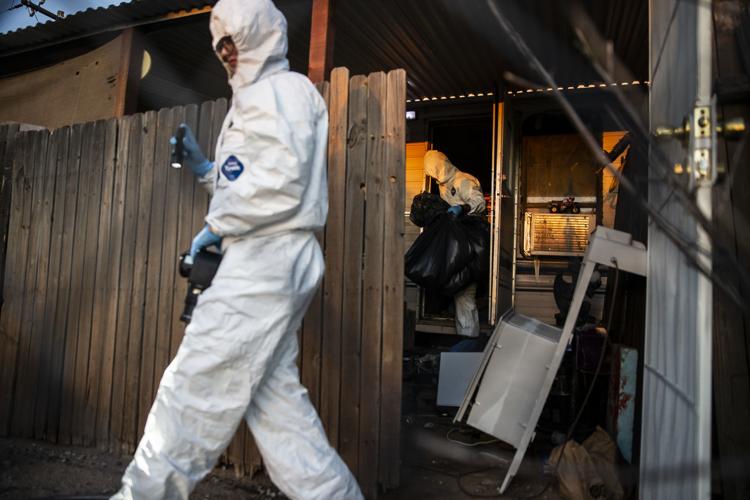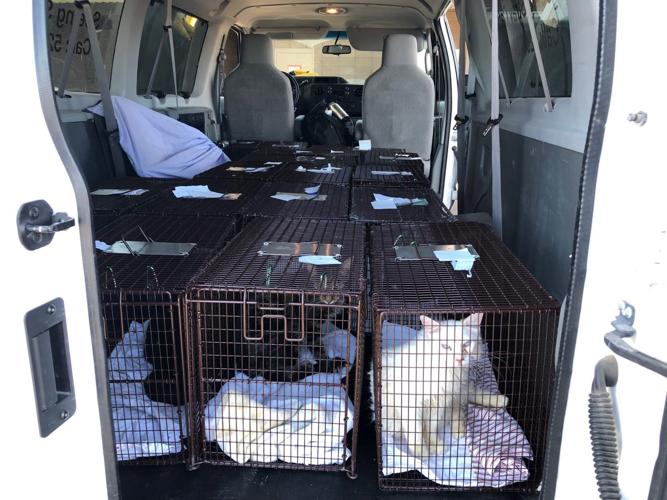The Pima Animal Care Center is teaming up with community organizations to develop a task force that will support overwhelmed pet owners and neglected pets.
It’s part of an effort that will include the Pima County Health Department, the Pima Council on Aging and other groups to address animal hoarding cases throughout the county.
Just one day after becoming PACC’s animal services director in 2017, Kristen Hassen remembers one of the worst animal hoarding cases she had ever seen. According to Hassen, there were about 60 cats living in a single home with feces piled up to 3 or 4 feet. Most of the cats were in very poor medical condition and there were some that were already deceased.
“What really struck me about it was that the person who owned the cats was actually living in a tent in the backyard,” Hassen said. “And it just seemed like such a heartbreaking situation because she was still caring for the cats — she couldn’t live in the home because it was uninhabitable for people at that time — but she was still there and still trying to care for them and I think afraid to call for help.”
Since then, Hassen said PACC has seen many cases where overwhelmed pet owners, who have their own challenges, get too many animals and then are afraid to reach out for support. The shelter takes in anywhere from 600 to 1,000 animals from hoarding cases each year and they’ve seen everything from cats and dogs to chickens and parrots.
“We end up with these situations that are terrible for people, terrible for the community and terrible for pets,” Hassen said. “In virtually every case, there are physical- and mental-health issues going on with the owner. So, the idea behind this task force was really to start to provide hope for the animals and the people in a way that isn’t punitive.”
Animal hoarding is defined not by the number of animals, but whether or not the owner is able to provide for the animals’ basic needs.
According to PACC’s Community Programs Manager Bennett Simonsen, experts say that many animal hoarders have suffered some type of emotional trauma, have attachment issues and are often physically or socially isolated.
“Experts have found that animal hoarding has about a 100% recidivism rate if the hoarder doesn’t get some sort of follow-up care and care to address the core issues,” he said. “That means that without some other sort of intervention, almost all of people who have too many animals will eventually end up with too many animals again.”
The goal of the task force is to change the way hoarding cases are handled by offering continued support to pet owners to prevent the problem from reoccurring or getting bigger, Hassen said.
In many of the extreme cases where homes have to be condemned, pet owners are not only losing all of their pets, but they’re losing their homes as well.
“In one day, they can lose everything they know,” Hassen said. “We’re trying to build a more humane approach to solving this problem.”
As part of the task force, PACC plans to bring in two part-time public health nurses to support and triage the owners in hoarding cases. Rather than taking all of their pets away, PACC will work with the owners to reduce their pets to a reasonable number and connect them with community resources to ensure they have access to continued support. They’ll also help spay, neuter and vaccinate the pets they intend to keep.
“Animals become their lifeline,” Simonsen said. “For many people, when we start talking about removing these animals, it’s a grief-like response, like somebody in their family died. Because that’s so much of their identity.”
Working to combat these preventable hoarding cases will also help reduce PACC’s total animal intake throughout the year, Hassen said. Last year, the shelter took in nearly 19,000 animals, but many of the animals that are being rescued from hoarding situations also have medical conditions, which puts an even larger burden on PACC’s staff.
Simonsen recalls a hoarding case from January in which PACC had to take in 50 dogs that were all exposed to parvo.
“When we get 50 animals with medical conditions into the shelter, that’s a huge burden on the shelter system and huge burden on the taxpayers who are funding the shelter, ” Hassen said.
The task force will meet for the first time on Feb. 25 at 5:30 p.m. in PACC’s community room. While the ultimate goal will be to reduce the number of hoarding cases throughout the county, Hassen said, the group will start by identifying who should be part of the conversation and getting the word out that PACC wants to help and will not punish people for reaching out for support.
So far in 2020, PACC animal protection officers have responded to seven cases with 10 or more animals in a home. In 2019, the shelter saw 37 hoarding cases, and there were 36 in 2018.
“This task force really is part of our larger approach at PACC, which is to not just think about animals in isolation, but to remember that companion animals are called companion animals because of their relationship with people,” Hassen said. “We also have to think about the person at the other end of the leash.”





